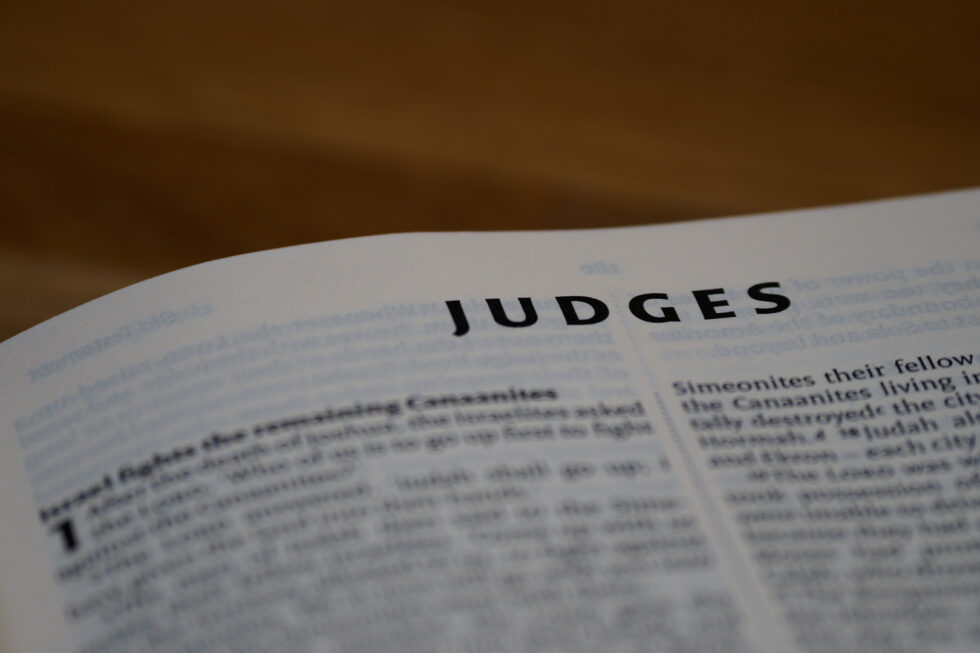
I experienced the devastating loss of my only two patents in a lengthy and costly inter partes review (IPR) in 2018. The process, spanning four difficult years, left me $300K in legal debt and with two canceled patents.
Since October 2021, I’ve actively immersed myself in the intricate world of patent law, seeking guidance from lawyers, judges, former USPTO directors, and fellow inventors who, like me, fell victim to the unjust Patent Trial and Appeal Board (PTAB).
My determined efforts have led me to Congress and the Senate dozens of times, advocating for a fairer system for start-ups, small businesses, and inventors. The emotional toll of losing everything in this unjust IPR process feels like being sentenced to life for a crime one did not commit. This feeling consumes my thoughts daily.
Rumor on the hill is that inventors, small businesses, and start-ups like me are being labeled as crazy and perhaps asking for too much when it comes to new legislation. Because we are questioning this legislation, we are blamed for hurting the passage, labeling us as crazy for not believing that the proposed patent legislation will fix the PTAB’s problems.
After doing a little bit of digging on the introduced legislation, the Promoting and Respecting Economically Vital American Innovation Leadership (PREVAIL) Act, I agree with them; maybe I am crazy.
PREVAIL: A Glimmer of Hope or Just Another Layer of Complexity?
Recent discussions around PREVAIL sparked optimism among lawmakers and pro-patent groups. The legislation offers but is not limited to fixing the PTAB by proposing the following: standing, a change in the burden of proof, and eliminating serial IPRs.
I used my own IPR, applied PREVAIL to it, and pretended like I got a “do-over” at the PTAB to see what my fate would be.
Standing and the serial attacks didn’t apply to my case. So, I did some digging on the topic of changing the burden of proof, which would take the preponderance of the evidence to clear and convincing evidence.
I have been told that clear and convincing evidence could reduce the invalidation rates at the PTAB from 84% to 20%. This would mean the invalidation rate at the PTAB would be lower than the District Court. This thought alone inspired me to learn more about how clear and convincing is impacting cases in the District Court.
In my IPR I lost both my patents under section 103 obviousness. The three-judge PTAB panel agreed entirely with my infringer’s experts’ written word testimony that my invention was obvious. It was vital for me to understand how the simple change to “clear and convincing” would have changed the PTAB judge’s final written decision of my case to find my invention not obvious.
Delving into the Subjectivity of KSR and its Impact on District Courts
I explored the nuances of the 103-obviousness test, particularly with the introduction of the KSR test. A test called TSM was previously used in the district court. Under TSM, judges only had to interpret the documents to find an explicit teaching, suggestion, or motivation. It is said that the TSM test was objective.
I read that the transition from the TSM test to KSR brought subjectivity into the equation, requiring judges to analyze the reasoning of a hypothetical person in the specific art, incorporating common sense and intuition.
I also read that the inclusion of additional rationales in KSR makes it a difficult task to determine how to define and apply common sense. Evidently, the Supreme Court in KSR provided no guidance on how to apply this standard.
Because the Supreme Court changed the obviousness analysis without changing the legal standard of review, judges are confronted with establishing and applying the level of common sense of a person with ordinary skill in the art as a matter of law. Under the TSM test, they had to interpret the documents to find an explicit teaching, suggestion, or motivation. KSR now forces judges to put themselves in the shoes of a person with ordinary skill in the art to decide if there is a combination or change.
The burden of proof sets the standard for how convincing the evidence must be. How does this change matter when KSR is a matter of speculation?
I read on and found that some cases are complicated by deciding whether the combination of multiple patents would be obvious based on the common sense of a person with ordinary skill in the art. KSR stated that it may be common sense to fit multiple references together like puzzle pieces. The opinion also included the combination of prior art references from different fields. KSR allows judges to decide that combining many prior references in various fields will render an invention obvious. This happened in my case; my infringer presented a car part as a key reference to how obvious my invention was.
As a patent owner, reading about KSR and the fact the Supreme Court gave no guidance to this test leaves me feeling uneasy that our life’s work is endangered by such a subjective test. I had to know more about how changing the burden of proof would help with the subjectivity of KSR, so I continued to research.

Experts advocate for their respective clients.
Plaintiffs and defendants will present expert testimony representing their respective viewpoints about the combination of prior art and common sense of a person with ordinary skill in the art. This testimony will, of course, be skewed to the side they represent and will, therefore, conflict. Expert testimony is presented not only to educate a judge on how a term was used but also to persuade the judge about each party’s respective viewpoint of common sense in the field. I read that the Seventh Amendment provides that a jury has the traditional role of resolving the conflicting expert testimony because it could evaluate demeanor and sense the mainsprings of human conduct.
I have never been to the District Court personally for patent litigation, but I know what it was like to defend my patent’s validity against my infringer’s expert and my expert at the PTAB.
At the PTAB, the experts don’t take the stand, and unfortunately, there is no jury to evaluate their demeanor. It is simply the judges taking the expert’s skewed word.
My expert and my infringer’s expert were never under oath. There was never a jury to watch, listen to, and observe their conduct at the PTAB. Changing the burden of proof at the PTAB will not give this crucial and necessary aspect to evaluating experts.
Discovery and Validity
In 2012, my infringer (the company owner) spoke to me on the phone numerous times, and we exchanged dozens of emails about how my jump rope technology was something he was excited to license. He knew I was working with the heavy hitters in the industry at the time, and he wanted to get his hands on it. He acknowledged my patents and proceeded to discuss licensing deals with me.
Not one bit of this critical evidence was introduced in my IPR proceedings at the PTAB.
If my case had never been instituted, I would have had the opportunity to present this evidence and other evidence to the judge and jury. Likewise, my infringer would also provide evidence to prove the invalidity of my patents should they desire. This would have allowed the judge to see the big picture of the case.
Discovery is a powerful tool that allows parties to build their cases and present evidence relevant to patent infringement AND patent validity. A judge’s perception of the strength or weakness of a patent’s validity can be significantly influenced in a smart and fair way for both parties. How will changing the burden of proof allow for the crucial aspect of discovery at the PTAB?
Conclusion
I have concluded and now have a better understanding that the burden of proof sets the standard for how convincing the evidence must be. It is the substance of the evidence itself—often brought to light through discovery, presented through witness testimony that remains a critical factor in the determination of obviousness under the KSR framework. The district court’s use of the “clear and convincing evidence” along with these critical aspects is what allows for the bias test of KSR to be applied with much more balance. The PTAB simply does not offer these critical factors to inventors, and PREVAIL does not include this. This leads me to have great doubt that changing the burden of proof will fix the devastating cancellation of thousands of inventors like me.
Call me crazy.
My point is not to insult the “fix” of changing the burden of proof; my point is to share what I have found and to voice my concern that this change will not make an impact on my case, which, as a result, will not impact others like me. I think my argument is normal, fair, and should be listened to.
The crazy narrative on inventors is disrespectful and unnecessary. I am a representation of the American Dream; I started a business out of my garage and was granted a patent for my hard work and innovative ideas. The PTAB got my case wrong. Plain and simple.
I may not have a background in patent law, but I understand how to educate myself on matters like this that impact my entire life’s work. Based on what we know about KSR, how can we with certainty expect that invalidation rates at the PTAB will significantly decrease because of a simple change in the burden of proof?
Call me crazy, but I think that I deserve better, that we deserve better, and so does our entire country.






I wouldn’t call PTAB panel judges! That is an insult to the most corrupt judges in the world.
PTAB is a Mafia hit squad working for the corrupt USPTO who pretends to be confused what their responsibilities are to their clients, the inventors!
Hi Molly – I read your case; it wasn’t the PTAB that did you in. Your counsel in front of the PTAB didn’t address all of the arguments/references presented, tantamount to admitting that the un-rebutted arguments/references were true. After that admission the PTAB’s ruling on your patent was unfortunately predictable.
Although I’m highly sympathetic to small business owners who invent great things, like you, your issue isn’t the PTAB.
Your issue was choosing counsel who didn’t know what they were doing vs a company who hired a very competent team who correctly took advantage of your counsel’s omission. This issue is common, and the unhappy clients are always told that it’s “The System” that screwed them over, never the counsel’s fault.
To “A Face In The Crowd”,
This is the most insigthful thing anyone has told me in the last 2-years about my IPR experience. All this time, it was simply my attorneys fault. Gosh…
I will be sure to tell the hundreds of small business owners who have lost their patents at the PTAB that it was their attorneys fault too.
I will notify the Senate and House to stop all legislation on PTAB reform, that we were wrong. It was all along the patent attorneys fault!
Attention all inventors! Please contact “A Face In The Crowd” for your next IPR. He or she is knows how to defend your patent at the PTAB! it is THAT simple!
PS: If you want to show your real face, in the crowd, please email me directly so we can discuss this further.